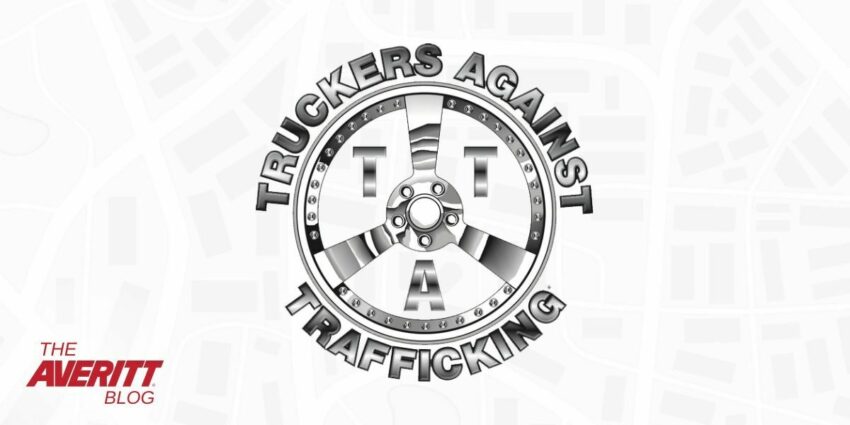
HUMAN TRAFFICKING: What truck drivers need to watch for & how to help
Post Date - Jan 15, 2024
In the ongoing battle against human trafficking, the trucking industry and the individuals who are a part of it act as crucial ally. Professional drivers can act as the eyes and ears of law enforcement, providing critical information and contributing significantly to the dismantling of widespread trafficking networks. As a supporter of this fight, and in light of January being National Human Trafficking Prevention Month, here is a look into an instance of one professional driver who intercepted a human trafficking network, as well as a comprehensive list of red flags and insights on how you can make a difference in this fight.
In January 2015, truck driver Kevin Kimmel caught a glimpse of a distraught-looking young girl in the darkened window of an RV parked back by the trucks at the truck stop where he’d stopped to sleep. He decided things didn’t look right and called the police. When police responded, they found an Iowa couple in the RV, along with a 20-year-old malnourished and frightened young woman, who said the couple had kidnapped her two weeks earlier in Iowa and forced her into prostitution. The couple was arrested and charged with sex trafficking.
This story is one of many shared by Truckers Against Trafficking (TAT) in its efforts to raise awareness of the crimes involved with human trafficking, or modern-day slavery. Human trafficking is a global problem in which people are illegally bought and sold for forced labor or commercial sex.
Averitt is a strong supporter of TAT and its mission to educate, equip, empower and mobilize the trucking, bus and energy industries to combat human trafficking while performing their regular jobs. As part of that support, we encourage all professional drivers to understand what red flags to watch for as well as ways to get trained as a certified Trucker Against Trafficking.
Red Flags to Watch For
TAT considers professional drivers the eyes and ears of our nation’s highways. Because of their presence at truck stops, rest areas and other locations frequented by traffickers, drivers are uniquely positioned to help sound the alarm on potential trafficking instances. TAT has compiled the following red flags to watch for:
- Any time you see a minor engage in a commercial sex act
- Any time you believe you are witnessing someone under the control of a pimp, regardless of the age or gender of the victim
- If a passenger vehicle pulls into the truck parking area of a rest area or truck stop and multiple people (usually females) get out of the vehicle and begin going from truck to truck
- Any time you hear a suspected victim mentioning that he/she has to make a quota
- People that seem to have a lack of knowledge of their surroundings or area
- Someone that appears to have restricted or controlled communication or is unable to speak for her/himself
- Suspected victims that have signs of branding (tattooing that would indicate ownership of a particular trafficker)
Averitt emphasizes to all drivers that they are not to approach traffickers. TAT asks that if you observe any behavior from the red flags list, alert law enforcement. Approaching traffickers is not only dangerous for you and their victims but could lead to problems in the eventual prosecution of traffickers.
Further training and certification
TAT offers training at no cost for drivers who want to be fully informed to assist with rescuing trafficking victims. TAT’s official certificate program enables drivers to become certified by watching a training video and passing a short quiz. Once on the page, be sure to choose the option specific to truck drivers.
Understanding traffickers and victims
According to TAT, traffickers emerge from all walks of life and use the exploitation of someone else to make money. A trafficker may appear to be simply helping out or doing a favor for someone in need. Traffickers target people in vulnerable situations and recruit them by building trust and offering safety and support.
Liz Williamson, TAT’s training specialist, is a trafficking survivor herself who works to dispel the myths surrounding this topic and foster a greater understanding of the victims. “It’s important to note that it’s a myth that these girls/boys/women/men are out there because they want to be - but rather, it's force/fraud/coercion that keeps them trapped,” Williamson said.
She notes victims seeking a way out may be encountered anywhere and are likely feeling hopeless and trapped. Trucking industry members should be watchful for a child, teen or young adult who may seem suspicious, uncomfortable, scared or reticent, in the company of a person who may be fast talking, sweet talking or commanding.
Making the call to save lives
In order to open an investigation, law enforcement will need “actionable information” so if you see red-flag behavior, commit to memory or make notes to include:
- Descriptions of cars or trucks (make, model, color, license plate, truck and/ or USDOT number, etc.)
- Description of people (height, weight, hair color, eye color, age, etc.). Take a picture if you can.
- Specific times and dates of when you see the event in question take place
- Addresses and locations where suspicious activity took place
When you contact law enforcement, be sure to tell them you suspect human trafficking, not prostitution.
Averitt is proud to support TAT in its important work and encourage all professional truck drivers to learn more, get involved and help save lives.
For more information on Truckers Against Trafficking or how you can help, contact tat.truckers@gmail.com or visit www.truckersagainsttrafficking.org. To learn more about joining Averitt, connect with us today!